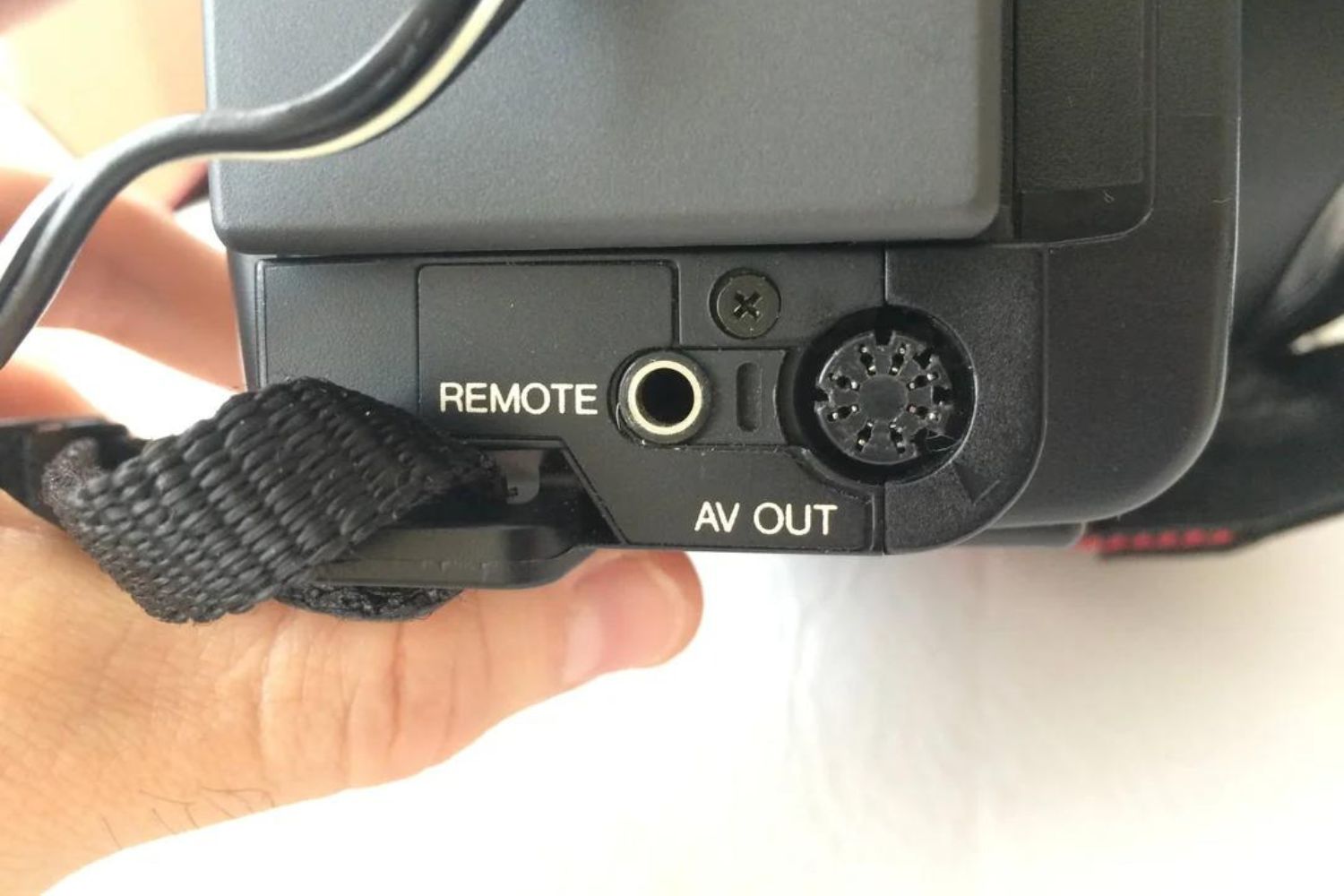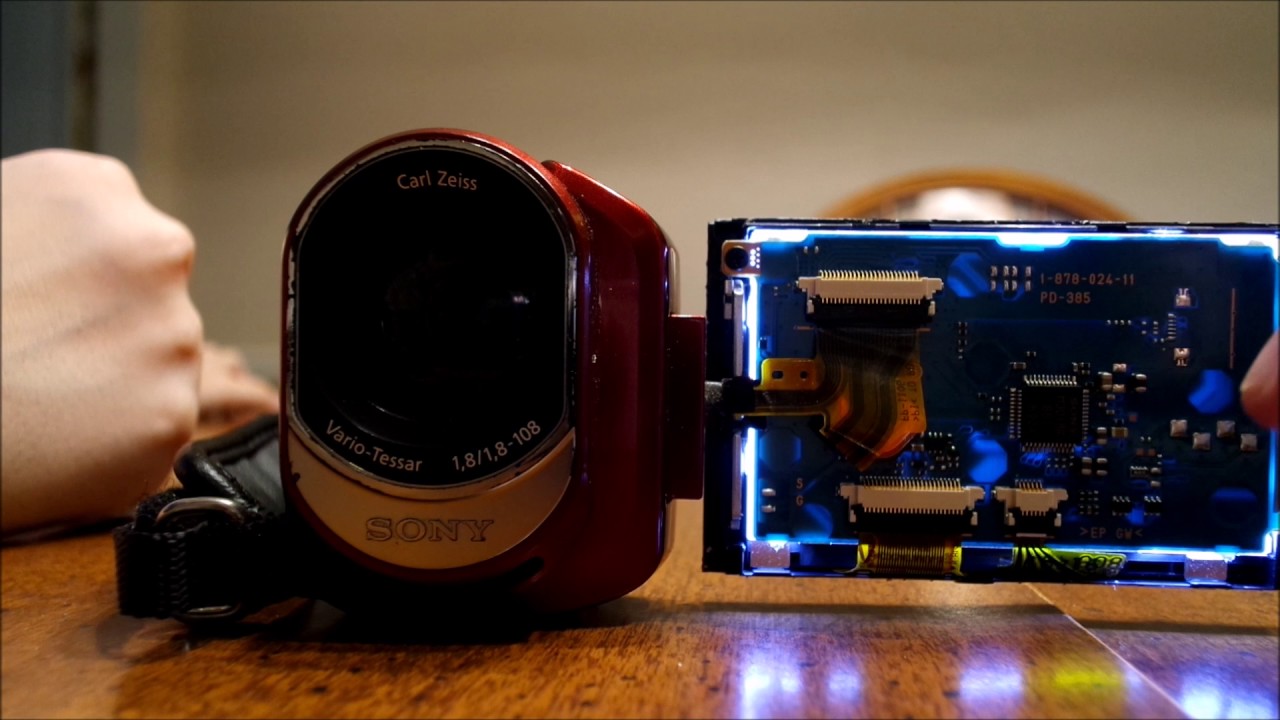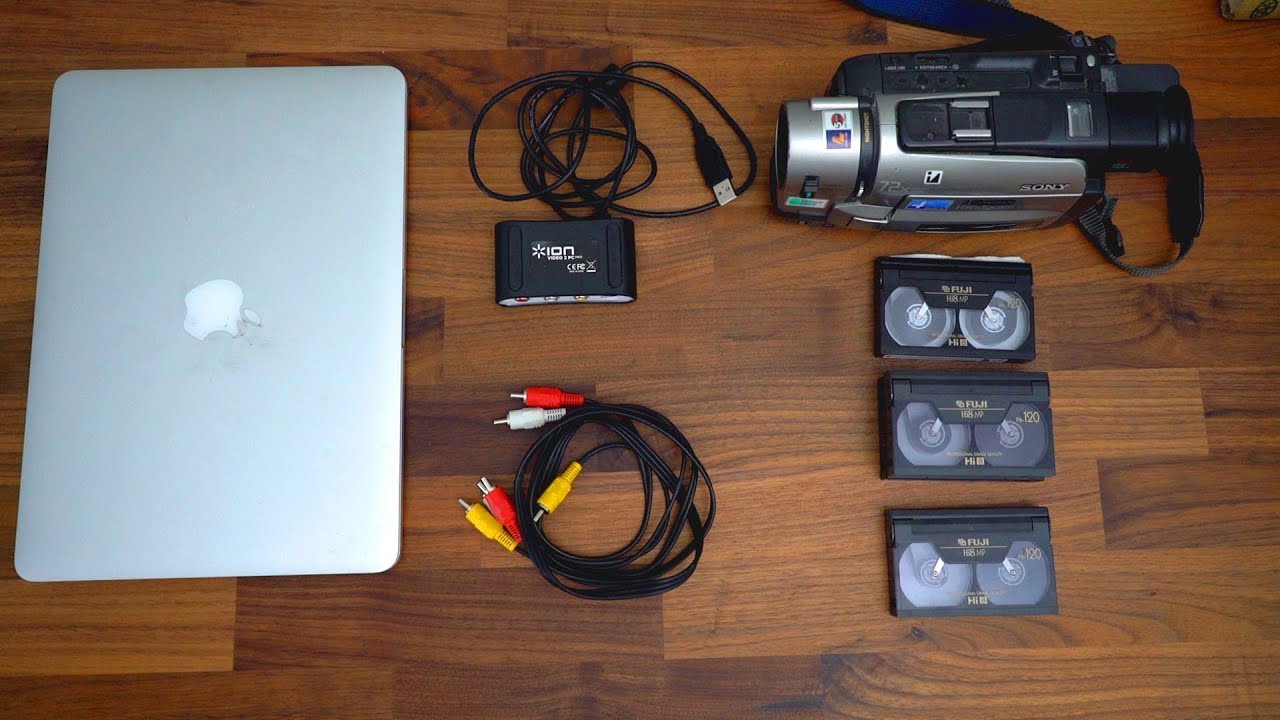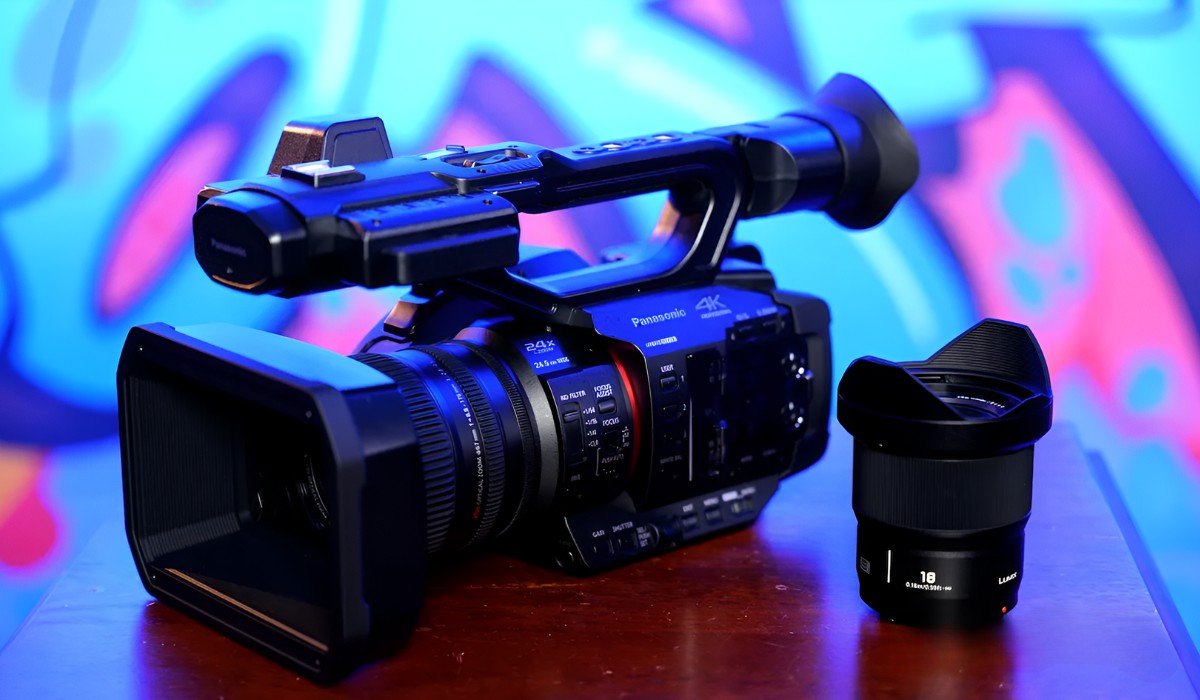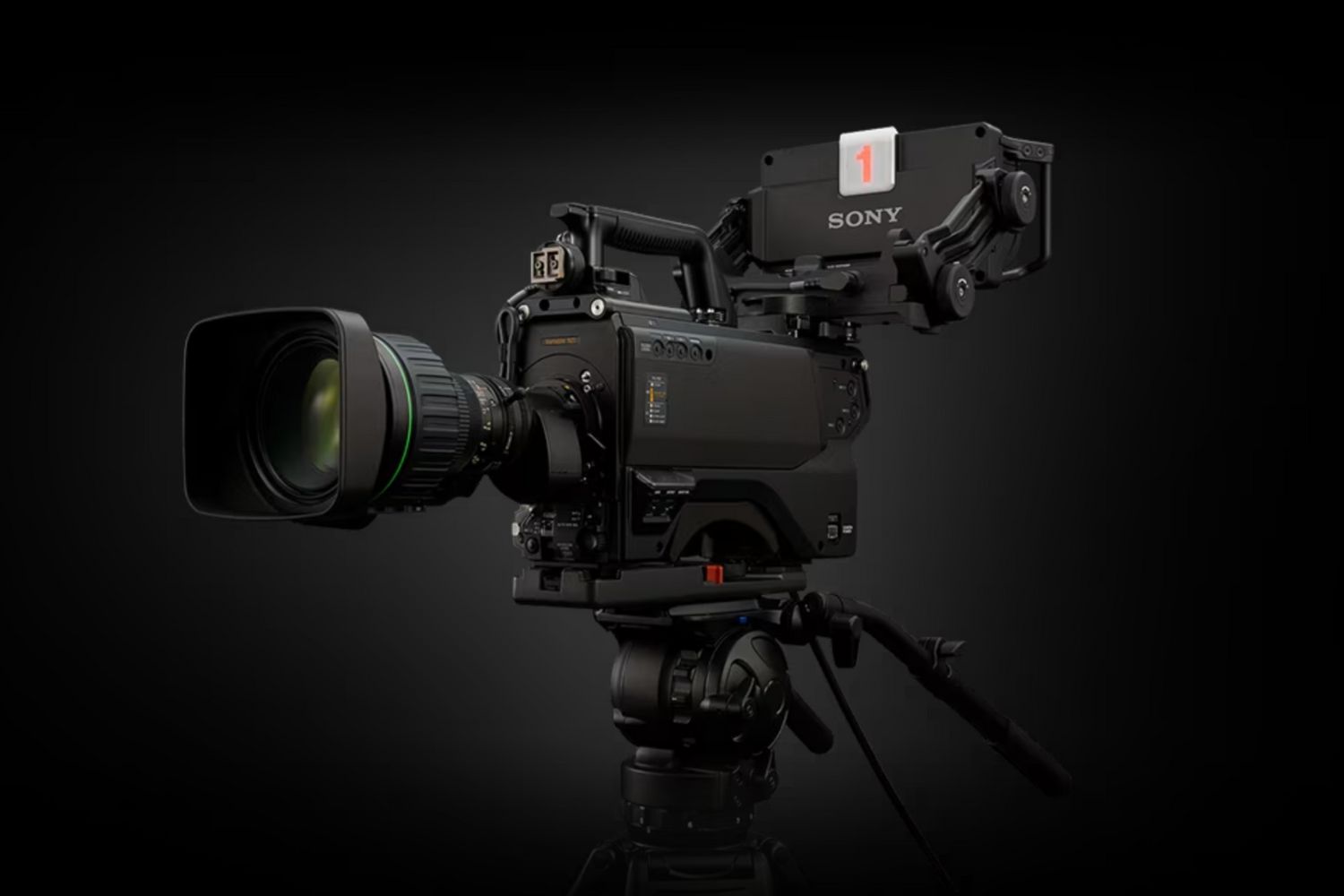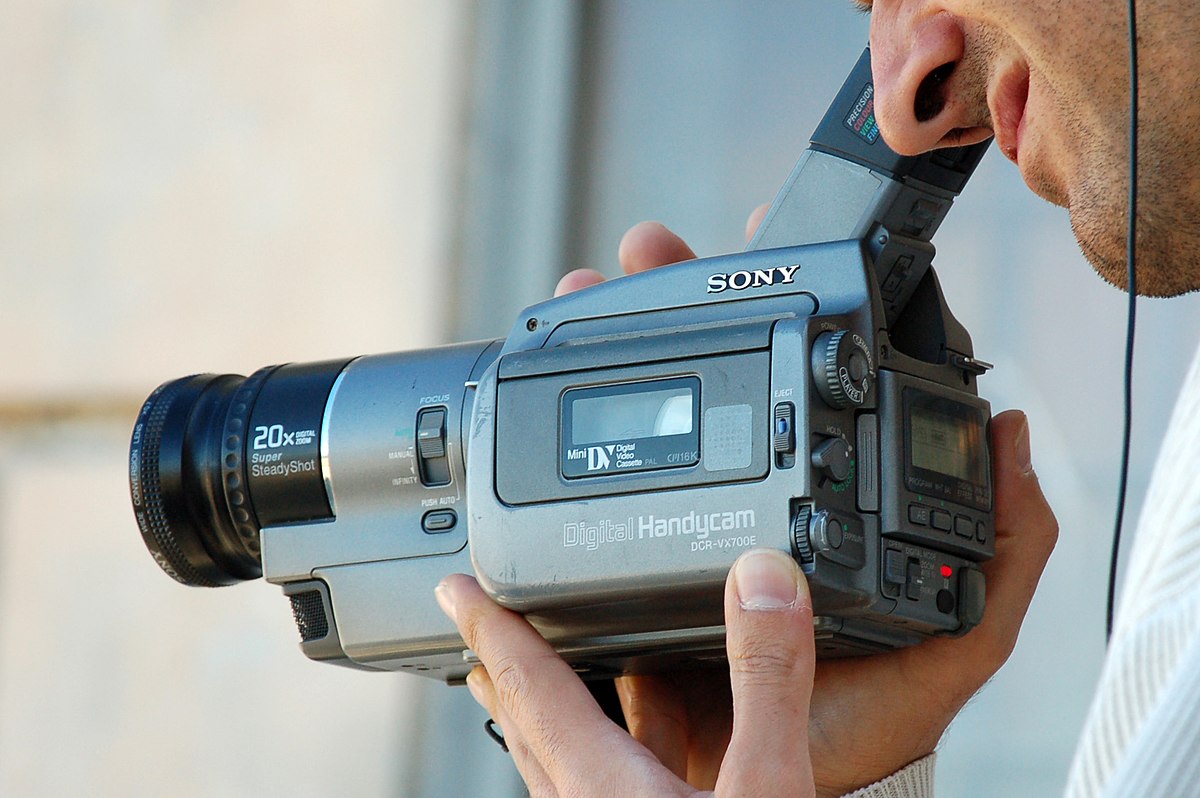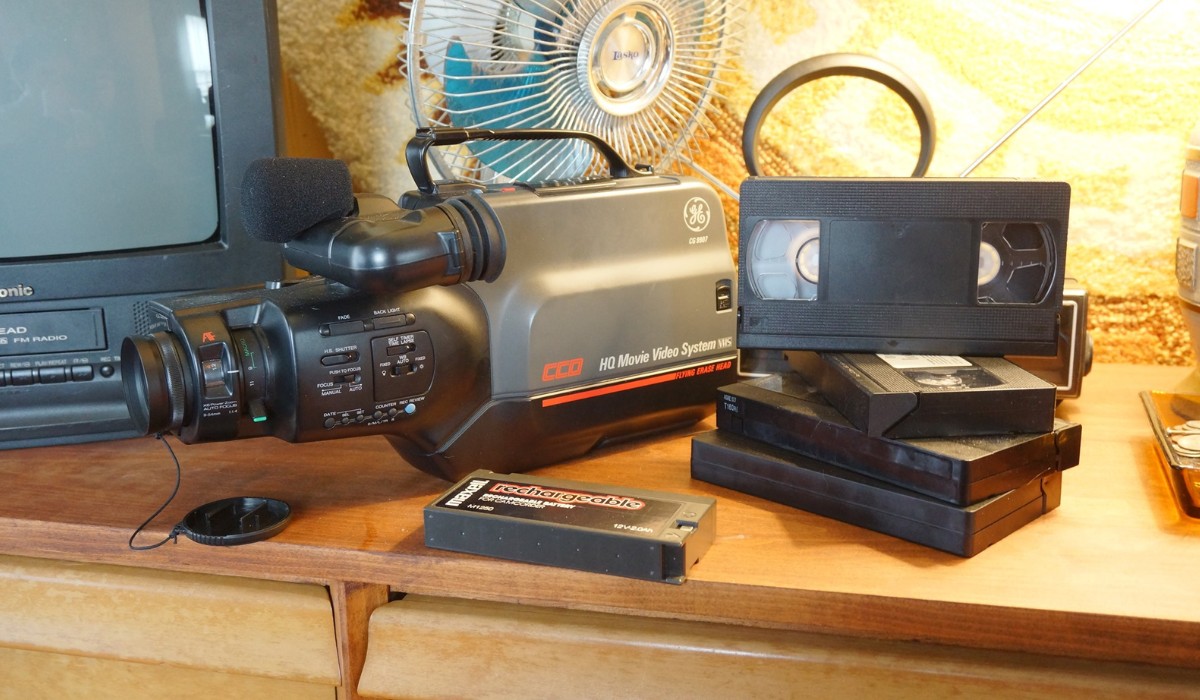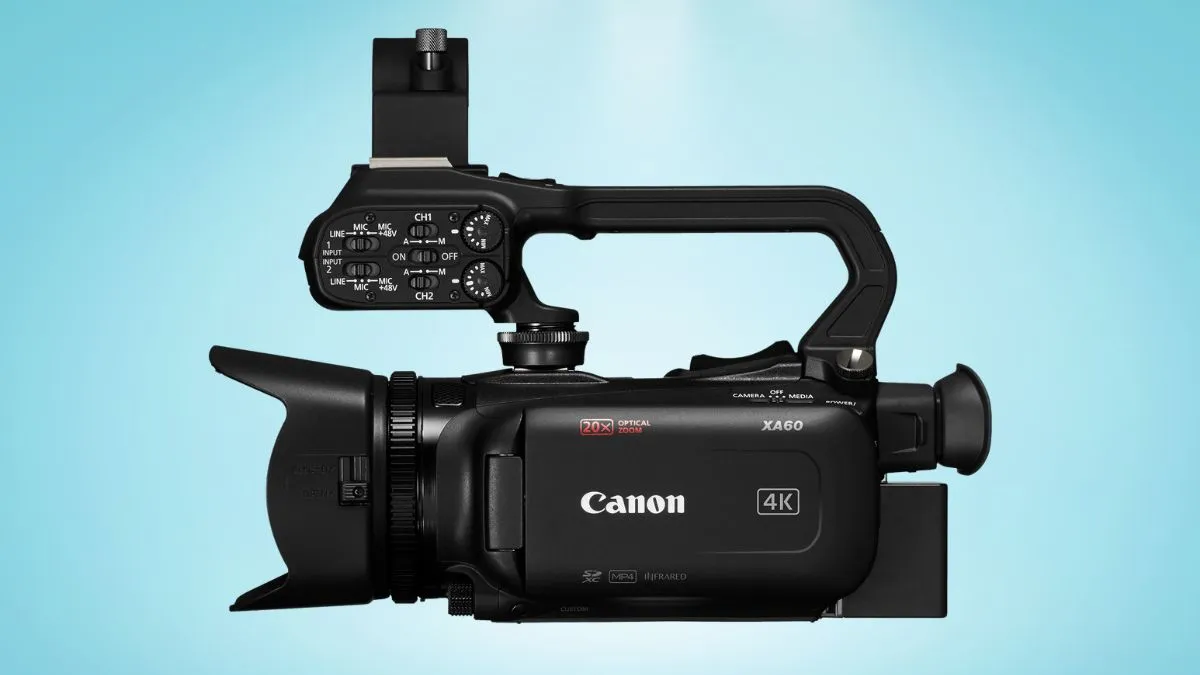Introduction
Welcome to the world of camcorders, where memories are captured and cherished for a lifetime. In this digital age, camcorders have evolved to offer various connectivity options, including the AV Out feature. Whether you're a videography enthusiast or a casual user, understanding the functionality and benefits of AV Out on a camcorder can greatly enhance your recording and viewing experience.
The AV Out, short for Audio-Video Output, is a crucial feature found on most camcorders, allowing users to connect their devices to external displays such as televisions, monitors, or other multimedia devices. This feature opens up a world of possibilities, enabling users to share their recordings with a larger audience or simply enjoy their footage on a bigger screen.
As we delve deeper into the realm of AV Out on camcorders, we will explore its functionality, the types of cables involved, and the various ways it can be utilized to enhance your recording experience. Additionally, we will discuss the advantages of utilizing the AV Out feature, shedding light on the myriad benefits it offers to users.
So, let's embark on this journey to unravel the intricacies of AV Out on camcorders and discover how this feature can elevate your videography experience to new heights. Whether you're a seasoned videographer or a novice enthusiast, this guide aims to provide valuable insights into the world of AV Out connectivity, empowering you to make the most of your camcorder's capabilities.
What is AV Out on Camcorder?
The AV Out, or Audio-Video Output, on a camcorder is a feature that allows users to transmit both audio and video signals from the camcorder to an external display or recording device. This functionality enables users to view their recordings on a larger screen, such as a television or monitor, and share their videos with a broader audience.
Essentially, the AV Out serves as a bridge between the camcorder and external audio-visual devices, facilitating the seamless transfer of audio and video content. This feature is particularly valuable for individuals who wish to showcase their recordings in a more immersive and communal setting, as it eliminates the limitations of small built-in screens and speakers.
Moreover, the AV Out on a camcorder supports the transmission of standard definition (SD) video signals, making it compatible with a wide range of display devices. This versatility allows users to connect their camcorders to various types of televisions, monitors, projectors, and other multimedia equipment, expanding the possibilities for viewing and sharing their recordings.
Whether you’re documenting family gatherings, capturing travel adventures, or producing creative video content, the AV Out feature empowers you to extend the reach of your recordings beyond the confines of the camcorder’s display. By understanding the capabilities of AV Out, you can unlock new avenues for experiencing and sharing your video content, enriching the overall videography experience.
How Does AV Out Work?
The AV Out functionality on a camcorder operates by transmitting analog audio and video signals through dedicated output ports, typically using specialized cables to establish connections with external devices. When a user activates the AV Out feature on the camcorder, the device begins to output the audio and video signals in a format compatible with standard display and playback equipment.
Internally, the camcorder processes the audio and video data captured by its recording components, converting them into analog signals suitable for transmission. These signals are then channeled through the AV Out port, which may be a dedicated socket or a multi-functional port that accommodates various connectivity options. The camcorder’s settings menu often provides users with the flexibility to adjust the output format, ensuring compatibility with different display devices.
Once the AV Out connection is established between the camcorder and an external display, the transmitted audio and video signals are received by the connected device, which processes and renders the content for viewing and playback. This seamless transmission of audio-visual data enables users to enjoy their recordings on larger screens with enhanced audio quality, thereby enhancing the overall viewing experience.
It’s important to note that the functionality and compatibility of the AV Out feature may vary across different camcorder models, as well as the types of cables and connectors used for establishing connections. However, the fundamental principle remains consistent: the AV Out facilitates the transfer of audio and video signals from the camcorder to external devices, expanding the possibilities for sharing and experiencing recorded content beyond the confines of the camcorder’s built-in display.
Types of AV Out Cables
Camcorders utilize various types of AV Out cables to establish connections with external display and playback devices. These cables are designed to transmit audio and video signals from the camcorder to the connected equipment, enabling users to enjoy their recordings on larger screens with enhanced audio-visual quality. Understanding the different types of AV Out cables available can help users select the appropriate connectivity solution for their specific needs.
1. Composite AV Cables: Composite AV cables, also known as RCA cables, are a common type of AV Out connection used in camcorders. These cables feature three connectors: yellow for video, and red and white for left and right audio channels, respectively. By plugging these connectors into corresponding input ports on a television or monitor, users can transmit standard definition video and stereo audio from the camcorder to the external display.
2. S-Video Cables: S-Video cables, characterized by a round multi-pin connector, offer improved video quality compared to composite cables. The S-Video connection separates the video signal into luminance (Y) and chrominance (C) components, resulting in sharper and more detailed video reproduction on compatible displays. While S-Video cables transmit video only, users can simultaneously use separate audio cables to transmit audio signals.
3. Component AV Cables: Component AV cables consist of three separate cables with red, green, and blue connectors for video, along with red and white cables for audio. This type of connection supports high-definition video transmission, making it suitable for camcorders capable of capturing and outputting HD content. Component AV cables offer superior video quality and are compatible with HD-capable displays, delivering vibrant and detailed visuals.
4. HDMI Cables: Some modern camcorders feature HDMI (High-Definition Multimedia Interface) ports for AV Out connectivity. HDMI cables transmit high-definition audio and video signals in a single cable, providing seamless and high-fidelity transmission between the camcorder and HDMI-compatible displays. The use of HDMI ensures optimal signal quality and convenience, making it a preferred choice for connecting camcorders to modern televisions, projectors, and monitors.
By understanding the characteristics and capabilities of these AV Out cables, users can select the most suitable connectivity option based on their camcorder’s features and the display devices they intend to connect to. Whether aiming for standard definition playback or high-definition viewing, the variety of AV Out cables offers flexibility and adaptability to cater to diverse audio-visual requirements.
Connecting Camcorder to TV using AV Out
Connecting a camcorder to a television using the AV Out feature opens up a world of possibilities for sharing and enjoying recorded content on a larger screen. Whether you want to showcase your travel videos, document family events, or review your footage with a wider audience, the process of connecting your camcorder to a TV is straightforward and rewarding.
1. Identify the AV Out Port: Begin by locating the AV Out port on your camcorder. Depending on the model, the port may be labeled as “AV Out,” “A/V Out,” or “Audio-Video Out.” It is typically a small, recessed socket designed to accommodate the AV Out cable connectors.
2. Select the Appropriate Cable: Choose the suitable AV Out cable based on the available connectivity options on your TV. If your camcorder supports composite, S-Video, or component AV Out, ensure that your TV has compatible input ports to receive the signals. For modern high-definition displays, utilizing an HDMI cable may offer the best audio-visual quality and convenience.
3. Connect the Cables: Once you have the appropriate cable, connect one end to the AV Out port on your camcorder and the other end to the corresponding input port on the TV. Ensure that the connectors are securely plugged in to establish a stable connection and prevent signal loss or distortion.
4. Set the TV Input: On your TV, select the input source corresponding to the port to which the camcorder is connected. This may involve using the TV’s remote control to navigate through input options and selecting the appropriate AV input source, such as “AV In,” “Video In,” or the specific input label associated with the connected port.
5. Activate the Camcorder AV Out: Access the camcorder’s settings menu to enable the AV Out feature. Depending on the model, you may need to specify the output format, such as standard definition (SD) or high definition (HD), to ensure compatibility with the TV’s display capabilities.
6. Enjoy the Viewing Experience: Once the connections are established and the settings are configured, play back your recorded content on the camcorder. The video and audio signals will be transmitted through the AV Out cable to the TV, allowing you to enjoy your recordings on a larger screen with enhanced visual and audio quality.
By following these steps, you can seamlessly connect your camcorder to a TV using the AV Out feature, transforming your viewing experience and sharing your video memories with friends and family in a more immersive and communal setting.
Connecting Camcorder to Other Devices using AV Out
Aside from televisions, camcorders equipped with AV Out functionality can be connected to a diverse array of external devices, expanding the versatility and accessibility of recorded content. Whether you wish to share your videos with friends, transfer footage to a computer, or integrate your recordings into multimedia presentations, the AV Out feature enables seamless connectivity with various playback and recording devices.
1. Connecting to a Monitor or Projector: If you prefer a larger display for viewing your recordings, connecting your camcorder to a monitor or projector via the AV Out feature can provide a cinematic viewing experience. Similar to the process of connecting to a TV, select the appropriate AV Out cable and connect your camcorder to the display device, adjusting the input source on the monitor or projector to receive the AV signals.
2. Transferring to a DVD Recorder: For users who wish to create physical copies of their recordings, connecting the camcorder to a DVD recorder via the AV Out feature allows for direct transfer and burning of videos onto DVDs. This method provides a convenient way to archive and share video content in a tangible format, preserving memories for future viewing.
3. Integration with Capture Cards and Audio-Visual Equipment: Professionals and content creators often utilize capture cards and audio-visual equipment for live streaming, video production, and content creation. By connecting the camcorder to these devices using the AV Out feature, users can leverage the high-quality audio and video signals from the camcorder for professional-grade recording and broadcasting purposes.
4. Importing to a Computer or External Recorder: AV Out connectivity facilitates the transfer of video and audio signals from the camcorder to a computer or external recording device, enabling users to import and save their recordings for editing, archival, or further distribution. This method is particularly useful for content creators and videographers who rely on post-production workflows for refining and sharing their video content.
5. Integrating with Multimedia Systems and Home Theaters: Camcorders with AV Out capability can be seamlessly integrated into multimedia systems and home theater setups, allowing users to incorporate their video content into immersive audio-visual environments. By connecting the camcorder to audio receivers, surround sound systems, and multimedia players, users can elevate the viewing experience and enjoy their recordings with enhanced audio fidelity.
By leveraging the AV Out feature to connect camcorders to a diverse range of devices, users can expand the reach and accessibility of their recorded content, enabling seamless integration with various playback, recording, and presentation platforms. This versatility empowers users to explore new avenues for sharing, archiving, and enhancing their video recordings, catering to a wide spectrum of audio-visual requirements.
Advantages of AV Out on Camcorder
The AV Out feature on camcorders offers a multitude of advantages that significantly enhance the versatility and usability of these recording devices. By facilitating seamless connectivity with external devices, the AV Out functionality empowers users to expand the reach of their recorded content and elevate their viewing and sharing experiences in various ways.
1. Enhanced Viewing Experience: Connecting a camcorder to a larger display, such as a TV or monitor, using the AV Out feature provides an immersive viewing experience, allowing users to appreciate their recordings on a bigger screen with enhanced visual detail and audio fidelity.
2. Communal Sharing of Memories: The ability to connect a camcorder to a TV or projector using AV Out promotes communal sharing of memories, enabling friends and family to gather and relive special moments captured in videos on a shared screen.
3. Professional Integration and Production: For professionals and content creators, the AV Out feature facilitates seamless integration with audio-visual equipment, capture cards, and external recorders, enabling high-quality video signals to be utilized for professional-grade recording, live streaming, and content production.
4. Archiving and Distribution: Connecting a camcorder to a DVD recorder or computer via AV Out allows for the archiving and distribution of video content, providing users with the flexibility to create physical copies, import recordings for editing, and share their videos across various platforms.
5. Optimal Display Compatibility: The variety of AV Out cables, including composite, S-Video, component, and HDMI, ensures compatibility with a wide range of display devices, accommodating both standard definition and high-definition viewing requirements based on the capabilities of the connected screens.
6. Seamless Multimedia Integration: Camcorders with AV Out capability can seamlessly integrate into multimedia systems and home theater setups, allowing users to incorporate their video content into immersive audio-visual environments, enhancing the overall entertainment experience.
7. Expanded Sharing and Presentation Options: The AV Out feature expands sharing and presentation options for users, enabling them to showcase their recordings in diverse settings, from family gatherings and events to professional presentations and public displays.
8. Flexibility and Adaptability: The versatility of AV Out connectivity offers users the flexibility to adapt to various audio-visual requirements, catering to different playback, recording, and presentation platforms, thereby enhancing the overall utility of the camcorder.
By harnessing the advantages of AV Out on camcorders, users can unlock new dimensions of creativity, sharing, and enjoyment, leveraging the connectivity and compatibility features to enrich their videography experience and extend the impact of their recorded content across different contexts and audiences.
Conclusion
As we conclude our exploration of the AV Out feature on camcorders, it becomes evident that this functionality serves as a gateway to a myriad of possibilities, empowering users to extend the reach and impact of their recorded content. The seamless connectivity offered by AV Out facilitates enhanced viewing experiences, communal sharing of memories, professional integration and production, archiving and distribution of videos, optimal display compatibility, multimedia integration, expanded sharing and presentation options, and overall flexibility and adaptability.
Whether connecting a camcorder to a TV for a family movie night, integrating it into a professional production setup, or archiving precious memories for posterity, the AV Out feature plays a pivotal role in enriching the videography experience. By understanding the types of AV Out cables, the process of connecting camcorders to different devices, and the advantages offered by this feature, users can harness its potential to elevate their video recording and sharing endeavors.
As technology continues to evolve, the AV Out feature remains a valuable and versatile component of modern camcorders, bridging the gap between personal and professional audio-visual experiences. Its ability to seamlessly transmit audio and video signals to external devices opens up a world of creativity, connectivity, and immersive engagement, shaping the way users capture, share, and relive their most cherished moments.
Whether in the context of family gatherings, travel adventures, professional productions, or creative endeavors, the AV Out feature continues to empower users to expand the horizons of their videography pursuits, embracing the potential for seamless integration, enhanced viewing experiences, and diverse sharing and presentation options. By embracing the capabilities of AV Out, users can embark on a journey of discovery, creativity, and connectivity, leveraging the power of seamless audio-visual transmission to enrich their lives and the lives of those with whom they share their captured memories.







